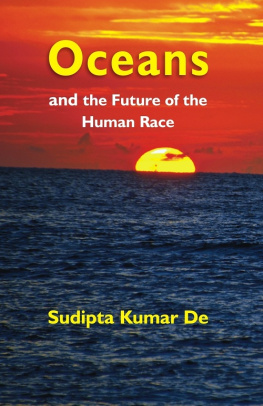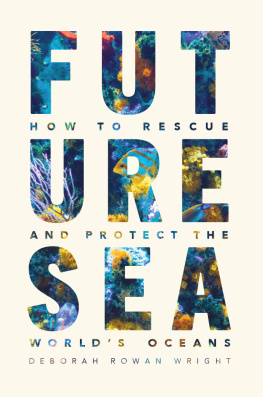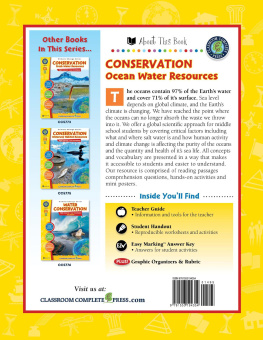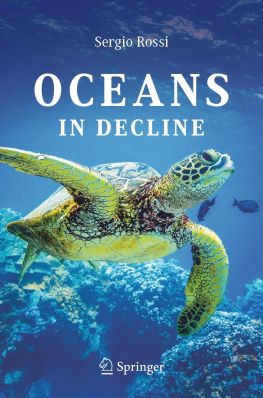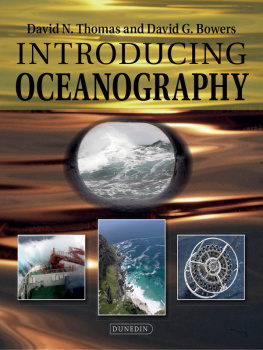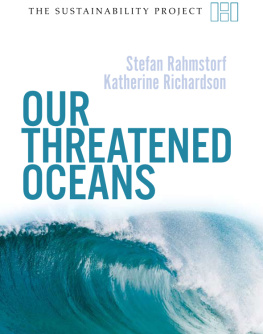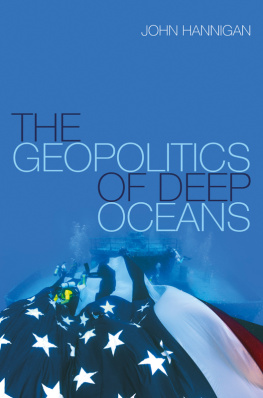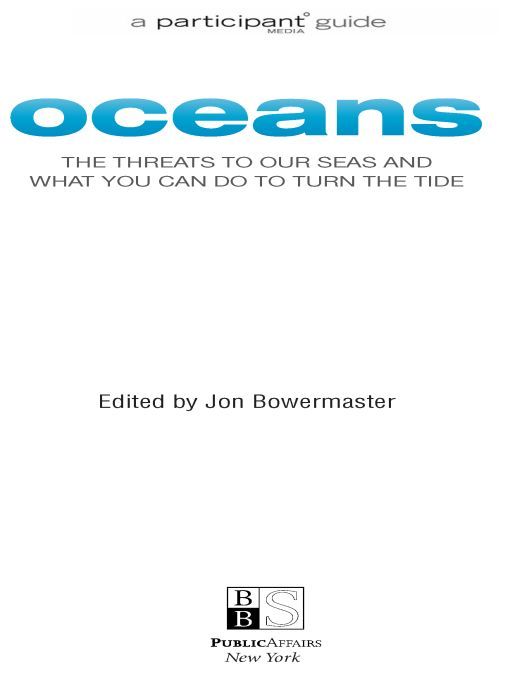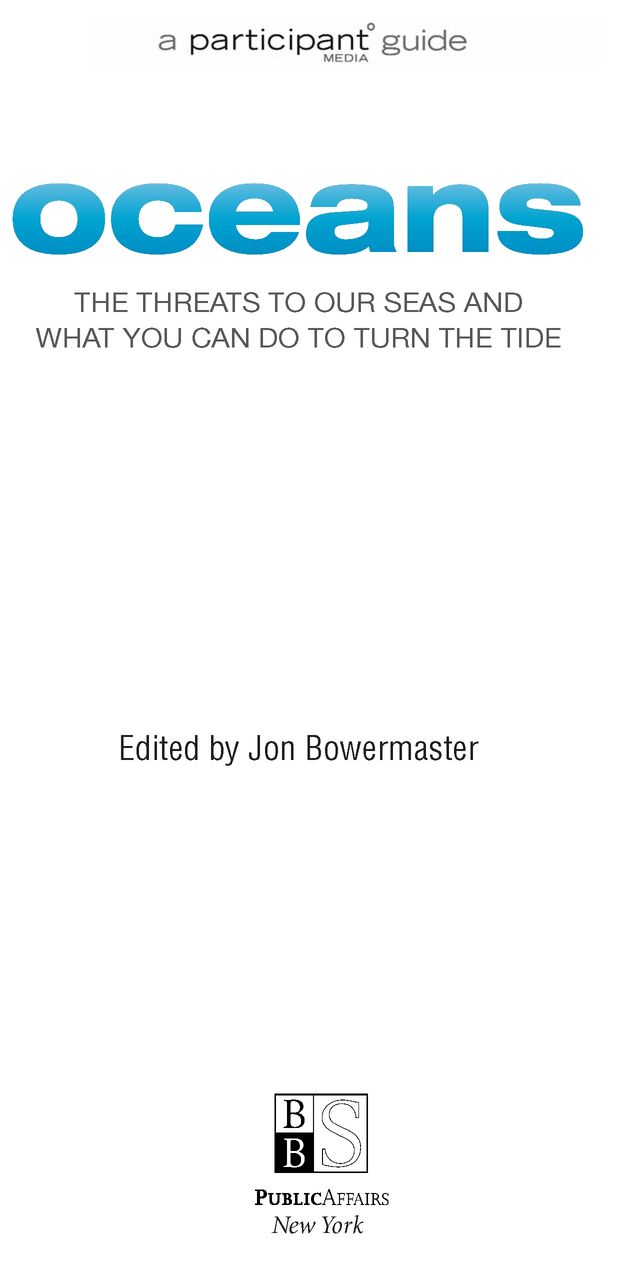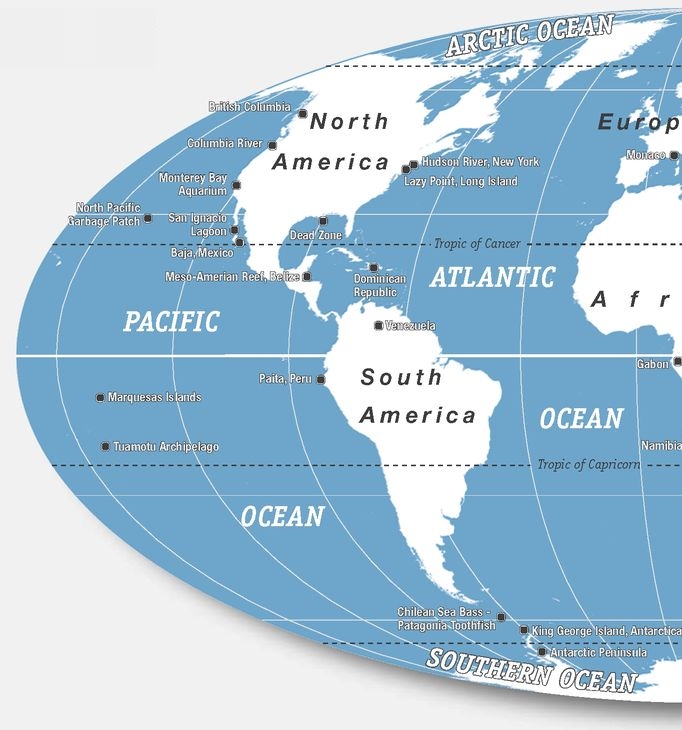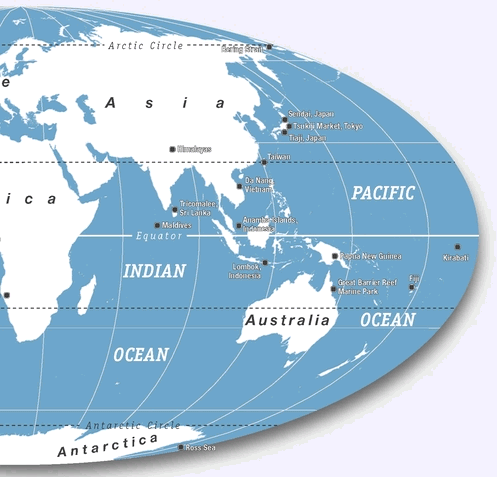Table of Contents
OTHER BOOKS IN THIS SERIES
Food, Inc.
Edited by Karl Weber
There are officially five oceansAtlantic, Pacific, Indian, Arctic,
and Southernthough it is easy to see by looking at the map
that a strong argument could be made that there is just
one big and connected ocean, covering 70 percent
of the planet. Labeled are many of the locations
visited by our authors in the course
of various explorations and in
their writings.
OCEANS MAP
INTRODUCTION
Where Blue Meets Blue: Trouble on the Horizon
Jon Bowermaster
Who isnt made blissful sitting at waters edge, staring at the horizon, hypnotized by that delicate, nearly imperceptible yet somehow distinct line where blue meets blue? Who among us doesnt count those solitary, sun-washed momentswhether afloat on a boat or feet dug deep into the sandas among the favorites of a lifetime?
Clich? Perhaps. But if the views off lands edges are not the most soothing, the most renewing on the planet, why do so many of us flock there to live, to work, to rejuvenate? Which raises the issue of why we call this Planet Earth when 71 percent of it is ocean. That this is not known as Planet Ocean speaks only to the ego of man because it has nothing to do with reality. It also raises the question of exactly how many oceans there are. Go get your atlas. Inside, youll find five mildly distinct bodies with labels (Pacific, Atlantic, Indian, Arctic, and Southern). I, like most whose writing graces these pages, believe there are no real distinctions, that this big body of water encircling the planet is just one ocean.
For the past twenty years a variety of explorations have given me a unique perspective on both the health of the ocean and the lives of people who depend on it. Ive followed a meandering route leading me from remote Bering Sea and Pacific islands; down the coasts of Vietnam and all of South America; around the various seas that surround Europe; parallel along sandy beaches in Peru and India; and along rocky ones in Croatia, Tasmania, and Kamchatka. At each stop, I have spent time with the people whose days are most defined and shaped by the ocean.
For all the differences each place offersfrom browsing forest elephants and surfing hippos along the beaches of Gabon to eighty-mile-an-hour winds raking the Aleutian Islands, from horrifically polluted bays off the South China Sea to centuries-old ritual celebrations still practiced on remote South Pacific atollssimilarities link them all. The same is true for ocean people. Although their cultures may differ in dress, food, religion, and more, the people who live along coastlines have far more in common than they have differences. Instinctively, the very first thing each does in the morning is scan the horizon line, the seascape, checking the morning sky and what it might portend. Increasingly, too, each is affected by a similar handful of environmental risks now exerting impacts on the ocean, its coastlines, and both its marine and human populations.
As the human population grows, headed fast toward 9 billion, the planets coastlines grow ever more crowded. Fourteen of the seventeen largest cities are built on the edge of the ocean. Nearly half the worlds population, more than 3 billion, lives within an hours drive of a coast. The rich go for the views and refreshing salt air, the poor for jobs and big dreams, holiday-goers for a brief respite. But we humans are a rapacious species, seemingly incapable of taking good care of any place; over the past five centuries or so, weve done a very good job of taking from the ocean without pause to consider its fragility and the damage weve done to it by our indifference.
How many of those billions who glimpse a sea with frequency wonder about how this big, beautiful ocean of ours is doing? Although it has long seemed limitless, its resources infinite, there are myriad signs that weve now abused the ocean to the point of almost no return. The list of harms is long. Acidification, global warmings evil twin, threatens to make all life in the ocean impossible for many species. Plastic waste is now so pervasive that on many beaches around the world, washed-up flip-flops and bottles are more prevalent than seashells; remote parts of the ocean are choking on it, and it is so dense that it has invaded the very pores and guts of many fishes and seabirds. Warming air and sea temperatures have put the planets ice at great risk, threatening an unprecedented sea level rise, with severe implications for the 145 million of us who live just a few feet above sea level. Various pollutions, especially fertilizers and runoff from industry and development, threaten our estuaries and gulfs, creating dead zones that kill everything. The reefs that circle the globe, the oceans warning canaries, are dying from a variety of ills. Eat fish? If so, you have to be concerned; experts predict that by 2050, all the fish species we currently survive on will be gone. Do you like tuna sashimi? Get it now because all of the worlds bluefin is anticipated to be gone by 2012. Forever. Freshwater supplies are endangered globally; new reports suggest that even in the wealthiest nation (the United States), 20 million people drink polluted water every day.
The bottom line is that what happens to the ocean affects each of us, whether we know it or not. As so many of the writers in the pages that follow suggest, as goes the ocean, so goes the human race. There is some hope for optimism, with marine reserves and both national and international laws in the works that may help make a difference. Lets hope they are enacted and enforced quickly enough to have an effect rather than just preceding an inevitable demise. Around the globe, for example, far too often marine reserves have been set up only after the last fish was taken.
Our book, with writings from some of the most thoughtful and committed protectors, explorers, and interpreters of the ocean, is not intended to scare but to inspire. Now is not a time for complacency regarding any environmental concern; it is not a time for modest steps. Rather, now is the time for action. We hope you will find some clues in these pages for how you might change your individual life to help keep the ocean both viable and welcoming for centuries to come.
PART I
LOVING IT
On MakingOceans
An Interview with Filmmaker Jacques Perrin
Veteran filmmaker Jacques Perrin is best known outside of his native France for his bold, technology-pushing wildlife films,


